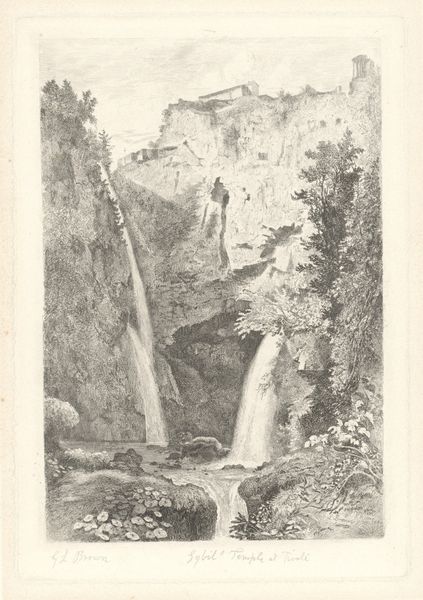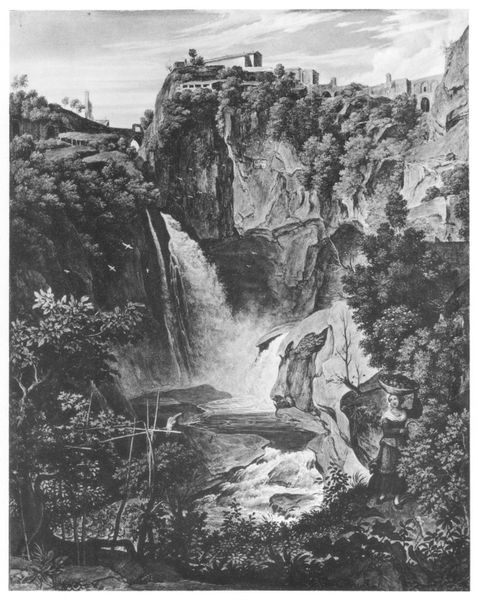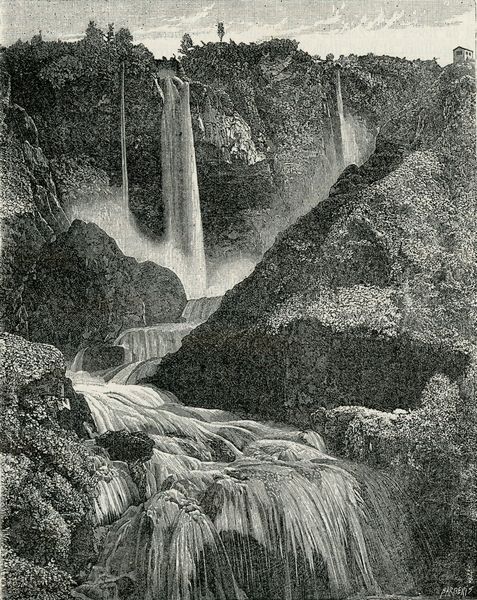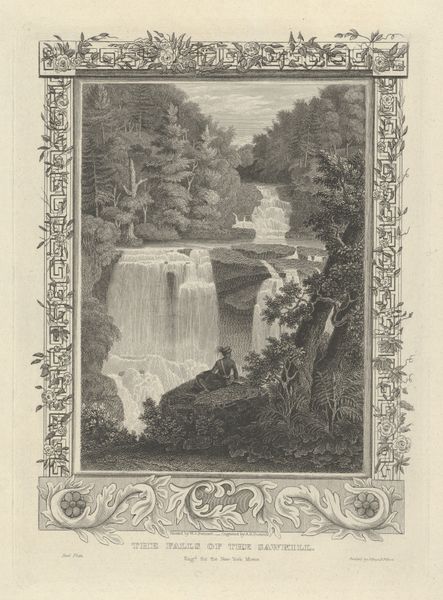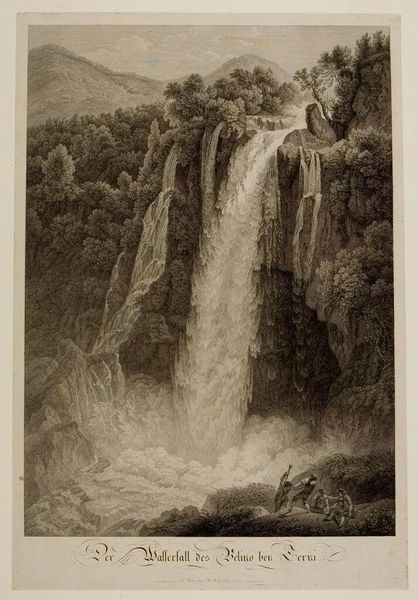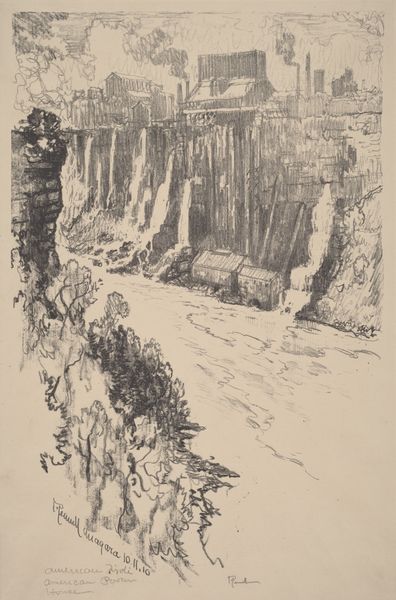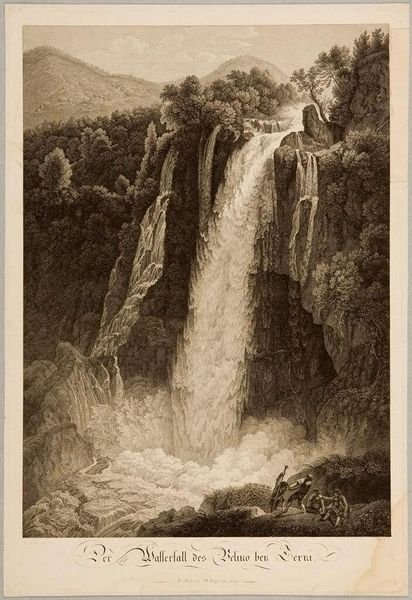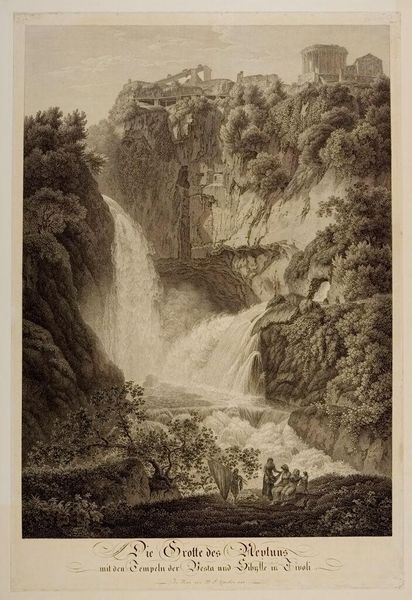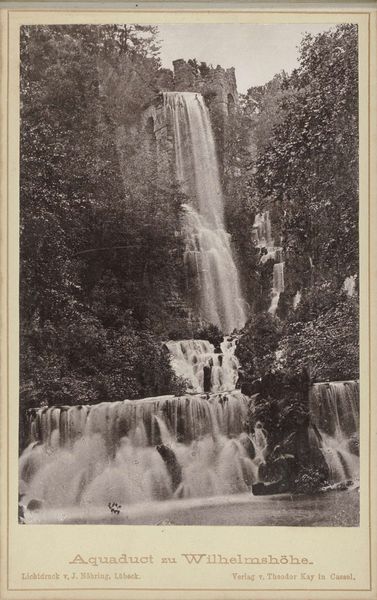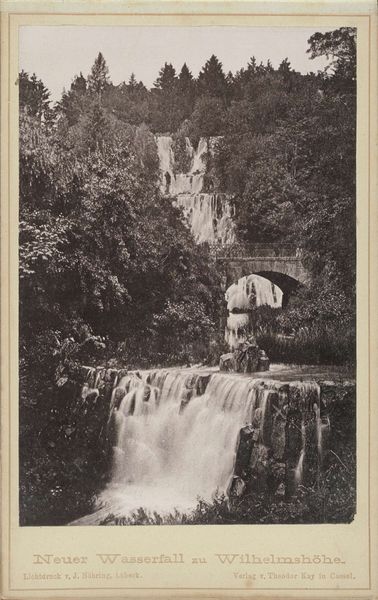
drawing, pencil
#
pencil drawn
#
tree
#
drawing
#
pencil sketch
#
landscape
#
waterfall
#
river
#
charcoal drawing
#
pencil drawing
#
romanticism
#
pencil
#
hudson-river-school
#
water
#
line
Copyright: Public domain
Curator: Here we have "Falls at Catskill," a pencil drawing made in 1829 by Thomas Cole. What's grabbing your attention? Editor: It's immediately the textures—that incredible range from the almost photographic rendering of water to the craggy, heavily worked rocks. You can practically feel the spray and the cool dampness of the scene. Curator: Absolutely. And consider the sheer labor involved in building up these tonal variations, stroke by stroke, with just pencil on paper. Cole’s craft highlights the intense time investment, doesn’t it? There is a human hand that painstakingly worked this. Editor: For sure. And placed within the context of its time, the work champions a distinctly American sublime. This landscape, so untamed, could also speak to expansionism, and the developing human imprint upon nature. Look at the small figures in relation to this majestic landscape—a deliberate commentary on scale, the romantic vision of man vs. nature and the consequences and context for that, which cannot be ignored, considering what we now know about its effect on Native populations. Curator: Indeed, Cole understood landscape both aesthetically and economically. As industry was ramping up, creating art about landscapes legitimized those industrial endeavors by emphasizing their resource potential and naturalness, the inherent power present within nature. What better way to make the point than showing this raw nature as beautiful? Editor: Precisely, framing nature as this untamed, resource-rich vista allows it to be perceived as ripe for taking. These renderings normalize, if not advocate, that type of engagement. I would add, who exactly is invited into the conversation and able to participate as witness? This lens of "beauty" has some serious blind spots. Curator: You're right, thinking critically about who gets to partake in the “discovery” and documentation of these spaces highlights existing power structures and inequities. The narrative always demands deeper inspection. Editor: This makes you rethink those conventional "nature as escape" platitudes when the drawing itself implicates us in the power dynamics. The implications, so carefully crafted by hand. Curator: Precisely. By centering the dialogue between materiality and history, the image starts to unravel new possibilities.
Comments
No comments
Be the first to comment and join the conversation on the ultimate creative platform.
